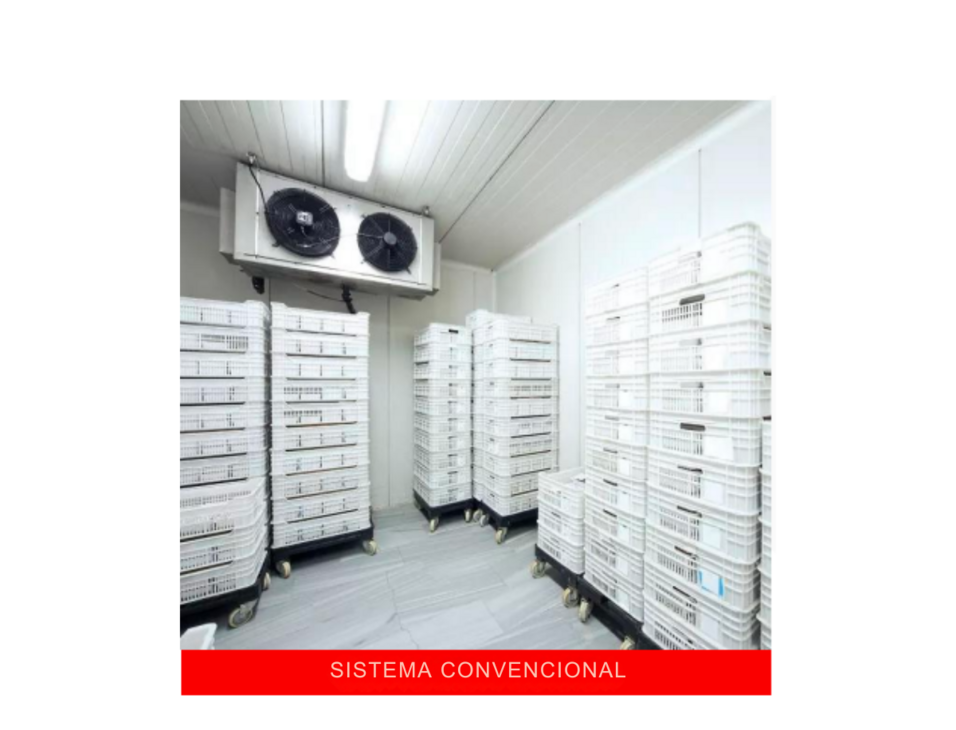

What if you could defrost without losses and in just minutes?
In food production, every minute counts. Defrosting is far more than just a preliminary step — it can make the difference between efficient operation and losing time, quality, and profitability. Yet traditional methods often fall short of today’s industry demands.
In this article, we show how radiofrequency technology is transforming this critical stage, offering a faster, safer, and more effective alternative. Discover two cutting-edge solutions that are changing the way the food industry handles defrosting.
Why is faster defrosting important?
A fast and controlled defrosting process significantly reduces the risk of bacterial growth and preserves the sensory qualities — freshness, aroma, taste, and texture — of your products. It helps ensure food safety while optimizing process time and enhancing operational efficiency.
Key aspects of proper defrosting
Food safety
Avoiding defrosting at room temperature is crucial: the surface may reach bacterial danger zones even if the core remains frozen. Controlled methods ensure product safety.
Product quality
Large ice crystals damage the cellular structure of food, affecting texture, aroma, and flavor. Uniform defrosting preserves these sensory attributes.
Operational efficiency
Traditional methods like still air or water immersion often create bottlenecks and require constant monitoring. Radiofrequency improves flow and reduces waste.
Reduced product loss
Minimizing drip loss and preserving nutrients not only maintains nutritional value but also increases profitability.
Regulatory compliance and traceability
Maintaining cold chain integrity and avoiding temperature fluctuations is essential for meeting health standards. Controlled defrosting facilitates traceability and builds customer trust.
Conventional defrosting methods: what are the limitations?
Despite the wide range of industrial defrosting methods available, many are still slow, inefficient, or unhygienic. Common methods include:
Still or forced air: Products are exposed to air at a controlled temperature. This process can take 24 to 48 hours and is hard to standardize.
Air jets: Slightly faster than static air, but may cause surface drying and is still relatively slow.
Water spraying or immersion: Faster but involves direct water contact, raising the risk of cross-contamination, excessive handling, and fluid loss.
Defrosting chambers: Widely used, yet they involve long waiting times and typically result in yield losses of 5–8% due to loss of valuable liquids and proteins — along with time that could be better spent.
These methods often require:
Long processing times
Large floor space
Manual handling and constant supervision
Inconsistent, non-repeatable results
They also tend to increase waste, compromise product quality, and demand additional resources to ensure hygiene and traceability.
The solution: fast, uniform defrosting with radiofrequency
Unlike conventional techniques, radiofrequency allows for faster, more uniform, and more controlled defrosting, preserving product integrity and minimizing losses.
This technology penetrates deep into the product and heats it from the inside out, avoiding hot spots, drip loss, or bacterial growth.
SOLIDWAVE: the solid-state microwave revolution
The SOLIDWAVE system from RF Systems uses solid-state microwave technology, eliminating the magnetron and setting a new standard for industrial defrosting:
Uniform defrosting with no hot spots
Outstanding reliability: up to 100,000 hours of service life
Consistent performance over time
Frequency range from 900 to 930 MHz
Precision power and process control
The SOLIDWAVE BATCH model can defrost up to 0.5 tons per hour using 25 kg trays. Its touchscreen interface stores 100+ customized recipes, enabling repeatable, efficient results.
SDF (5–75): continuous defrosting tunnel by radiofrequency
The other powerful solution from RF Systems is the SDF tunnel, designed for inline, continuous operation with no additional handling:
Uniform defrosting of meat, fish, vegetables, fruit (block or IQF)
Fast, drip-free processing with no bacterial growth
Suitable for packaged products, no risk of cross-contamination
Automatic belt cleaning (CIP system)
Auto power regulation for consistent results
High energy efficiency, zero CO₂ emissions
Modular design allows increased capacity as needed
Benefits for your facility
By implementing an RF Systems radiofrequency defrosting solution, you can achieve:
Up to 90% faster defrosting time
Zero drip loss, preserving weight and product value
Just-in-time operation, no production bottlenecks
Reduced footprint and lower operating costs
Easy integration into automated lines
Changing how you defrost can have a major impact on your operation’s efficiency, safety, and profitability. Radiofrequency is a proven, versatile, and highly effective technology — ideal for food processors ready to take a big step forward in productivity without compromising quality.